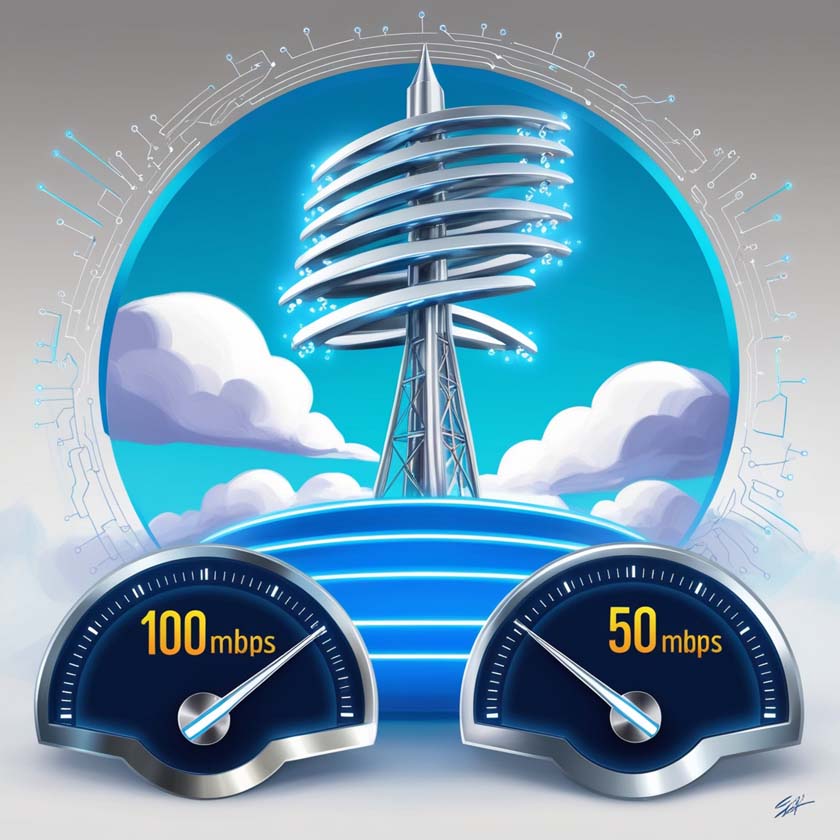With the continuous development of mobile communication technology, location information technology has become an important component of modern communication systems. WCDMA (Wideband Code Division Multiple Access) and LTE (Long-Term Evolution) are two mainstream mobile communication technologies that play key roles in achieving efficient data transmission and precise location information services. This article provides an overview of WCDMA and LTE technologies and discusses their applications in location information technology.

II. Overview of WCDMA Technology
WCDMA is one of the main standards of third-generation mobile communication technology (3G). It uses wideband code division multiple access technology, which allows simultaneous data transmission for multiple users. WCDMA’s high spectrum efficiency can provide high data transmission rates, making it suitable for multimedia services and mobile internet applications. Key features of WCDMA include:
1. High Data Transmission Rate: WCDMA can achieve a downlink rate of up to 2 Mbps, which was very advanced in 3G networks at the time.
2. High Spectrum Utilization Efficiency: By using CDMA technology, WCDMA can support more users within the same frequency band.

3. Multiple User Concurrency: WCDMA effectively manages signal interference among multiple users, ensuring communication stability and reliability.
In location information technology, WCDMA provides high-precision positioning services through Enhanced Cell ID (E-CID) and Location-Based Services (LBS). For example, by analyzing signal time delay and Doppler shift, the precise calculation of the mobile terminal’s position can be achieved.
III. Overview of LTE Technology
LTE is the main standard of fourth-generation mobile communication technology (4G). Compared to WCDMA, LTE has significant improvements in data transmission rates, latency, and spectrum efficiency. Key features of LTE include:
1. Ultra-High Data Transmission Rate: LTE can achieve downlink data transmission rates of over 100 Mbps and uplink rates of up to 50 Mbps.

2. Low Latency: LTE’s end-to-end latency is less than 10 milliseconds, significantly enhancing user experience, especially for real-time applications like video calls and online gaming.
3. Flexible Spectrum Use: LTE supports various spectrum bandwidths, including 1.4 MHz, 3 MHz, 5 MHz, 10 MHz, 15 MHz, and 20 MHz, making network deployment more flexible.
In location information technology, LTE employs Enhanced Location Services (E-LBS), including Cell-ID-based positioning, Observed Time Difference of Arrival (OTDOA), and Enhanced Observed Time Difference of Arrival (E-OTDOA). These technologies, combined with high-precision time synchronization and large-scale antenna arrays, can provide sub-meter level positioning accuracy, widely used in smart transportation, logistics management, and personnel positioning.

IV. Comparison of WCDMA and LTE in Location Information Technology Applications
Both WCDMA and LTE have their advantages in location information technology applications. WCDMA is mature and widely covered, suitable for basic positioning services. LTE, with its high data transmission rate and low latency, is more suitable for high-precision positioning and real-time data transmission scenarios. For example, in intelligent transportation systems, LTE’s low latency and high-precision positioning enable real-time communication and precise navigation between vehicles, improving traffic efficiency and safety.

EELINK Communications realizes the interconnection of everything through innovative smart technology, dedicated to solving customer needs by providing efficient and reliable solutions, thereby creating value. Recognizing the importance of IoT technology, EELINK continuously drives technological innovation to meet the ever-changing needs of customers. In this rapidly developing era, EELINK, through its outstanding technology and services, has established significant influence in the IoT field, helping global customers achieve intelligent transformation.
